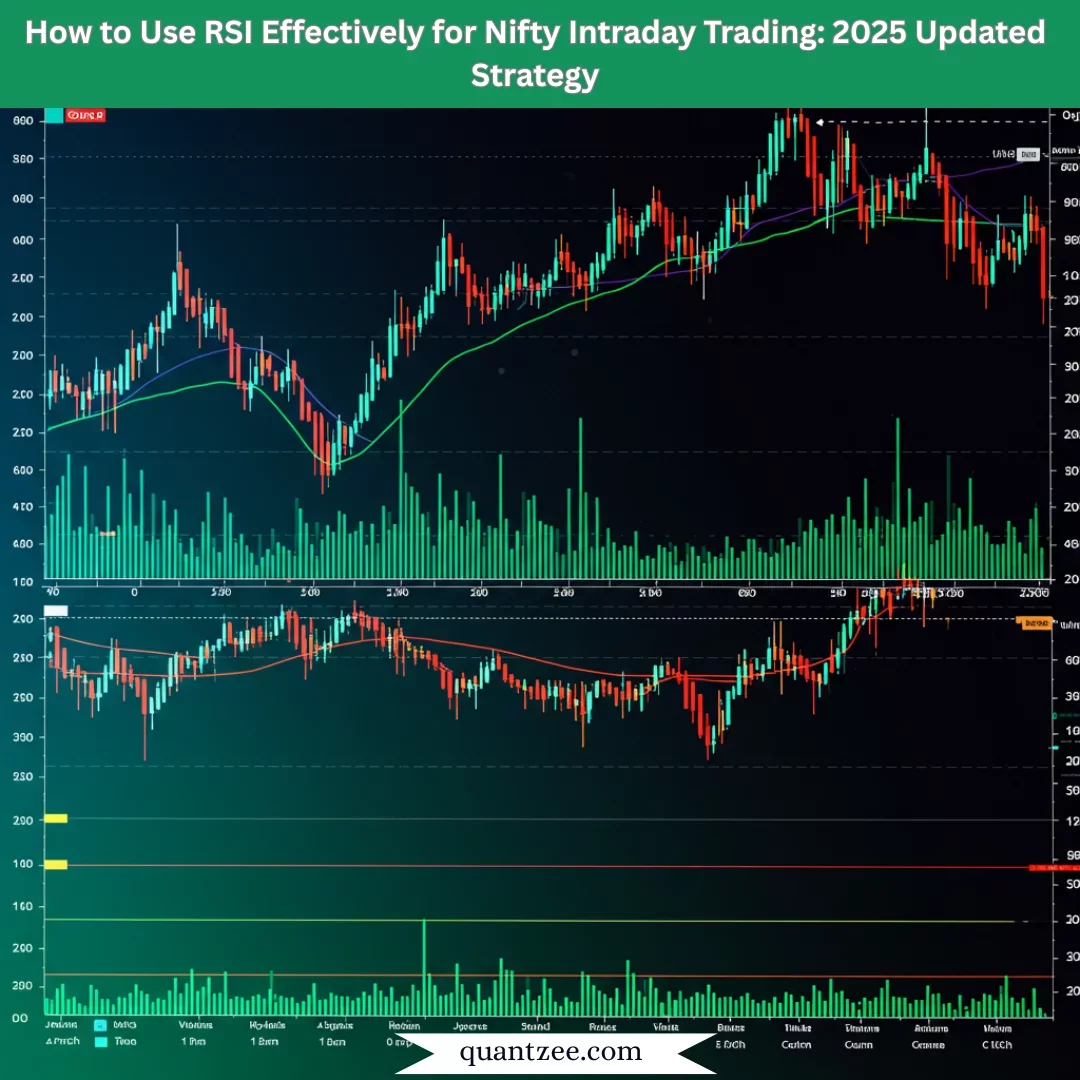Using VWAP with Fibonacci: Advanced Indicator Strategy for Intraday Scalping

Scalping in day trading is not about capturing big moves it is about taking many small and precision high probability trades. VWAP with Fibonacci sequence for Nifty traders For Nifty traders VWAP with Fibonacci sequence is becoming the simplest and win strategy.
VWAP is the actual average price of a stock or index weighted by trading volume, making it a measure of institutional activity. Fibonacci retracements, on the contrary, reflect potential support and resistance areas that traders use to identify where the price could reverse, due to the psychological and market factors and Fibonacci ratios.
Combined, these tools form a powerfulindicator for nifty intraday trading, which scalpers can use to pinpoint low risk entries, profit targets and quick exits. The approach is suited to short bursts of price activity, such as those during volatile opening and closing sessions.
In this post, we will do a VWAP with Fibonacci indicator intraday nifty trading strategy. We all dig into practical next steps, tools, options and considerations, and example configurations that actually work in 2025. Now, it is easier than ever to back test and automate these approaches with platforms like Quantzee
1. Understanding VWAP and Why It Matters
VWAP is more than just an average it reflects where the majority of money is flowing. Institutional traders, funds, and algorithms rely on VWAP to gauge fair value during the trading day.
For Scalpers: VWAP acts as a magnet for price. Stocks often return to VWAP after moving away, creating mean-reversion setups.
For Swing Points: VWAP also helps filter breakouts. A breakout above VWAP with high volume usually signals strength.
Pros
Provides a real-time “fair value” reference.
Adapts dynamically as new volume enters.
Cons
Less useful in illiquid stocks.
May lag in extreme volatility.
Quick Checklist
Always mark VWAP on your chart.
Treat it as both support and resistance.
2. Fibonacci Retracements: Market Psychology in Numbers
Where is a story: levels of Fibonacci (23.6%, 38.2%, 50%, 61.8%) in most of the cases are the levels of correction, where one trader expects a reaction.
In addition to serving as nifty intraday trading signals, Fibonacci is a scalpers go to setup for finding pullbacks within larger moves. For instance, if Nifty goes from 19,800 to 20,000, traders will be monitoring 19,920 (38.2%) and 19,910 (50%) for bounce plays.
How It Helps Scalpers
Identifies profit-taking zones.
Combines with VWAP for confirmation.
Common Mistakes
Incorrectly drawing Fibonacci out of incorrect swing points.
Ignoring volume confirmation with VWAP.
Example Use Case
When price is at about 61.8% retracement and touches VWAP, it usually prints a high probability entry.

3. Combining VWAP and Fibonacci: The Hybrid Edge
The real power comes when you combine VWAP withFibonacci retracement. Together, they create confluence zones areas where both institutional flows and market psychology align.
Step by Step Setup
Plot VWAP for the session.
Draw Fibonacci retracement from the high to low of the current swing.
Look for overlapping levels where VWAP and Fibonacci meet.
Wait for nifty intraday trading signals like RSI divergence, candle patterns, or volume confirmation.
Benefits
More reliable than using either tool alone.
Reduces false breakouts and whipsaws.
Example Strategy
If VWAP is at 19,950 and Fibonacci 50% retracement also aligns near 19,950, this creates a strong scalp entry with a tight stop-loss.
4. Turning It into a Nifty Intraday Trading System
Indicators are powerful, but without rules they fail. The goal is to create a structured nifty intraday trading system with VWAP and Fibonacci.
Rules to Follow
Entry Rule: Trade only when price aligns with VWAP + Fibonacci confluence.
Exit Rule: Book profit at the next Fibonacci level or ±10–15 points for Nifty.
Risk Rule: Max risk per trade = 1% of capital.
Tools/Resources
Charting platforms like TradingView.
Algo platforms like quantzee to back-test and automate.
Volume filters for better signal confirmation.
KPIs to Track
Win rate % of confluence setups.
Average reward-to-risk ratio.
Number of trades per day.
5. Mistakes to Avoid in This Strategy
Even the best nifty intraday trading strategy may not work if it is not applied properly.
Common Mistakes
Trading the VWAP bounces without checking the Fibonacci levels.
Ignoring the broader market trend (e.g., shorting in a strong bull run).
Overtrading by forcing setups that just do not exist.
Mini Checklist
Confirm overlap of VWAP + Fibonacci.
Intraday validation through volume or candlestick patterns, etc.
Avoid trades around major news events.
Conclusion
When used together, VWAP and Fibonacci create a powerful indicator for nifty intraday trading. VWAP illuminates an institutional angle, whereas Fibonacci provides psychological layers of support and resistance. This combo refines the already fairly socialized scalp trading techniques by pinpointing nifty intraday trade signals for high accuracy.
Strict discipline in following the rules is paramount. One must also pay attention to risk and never force a trade. With the Quantzee platform, one can even test and automate this nifty intraday trading tool as a structured system.
Taking into consideration the trader at the beginning of his career and the trader who is seasoned and well experienced, utilizing the nifty intraday trading system of VWAP combined with Fibonacci could help secure fast profits with less risk involved.
FAQs
Q1: Is VWAP better than Fibonacci for intraday trading?Both serve different purposes. VWAP tracks institutional flow, while Fibonacci maps psychological levels. Used together, they offer stronger signals.
Q2: Can I automate a VWAP + Fibonacci system?Yes. Platforms like Quantzee allow traders to design and back-test systems combining multiple indicators without heavy coding.
GET IN TOUCH
Mail us at: [email protected]
Find detailed information about this at: https://quantzee.com/
Stay connected with us! Follow us on our social media channels for the latest information & updates.
Sign up for our newsletter
Subscribe to receive daily sparks of creativity, insights, and growth tips

